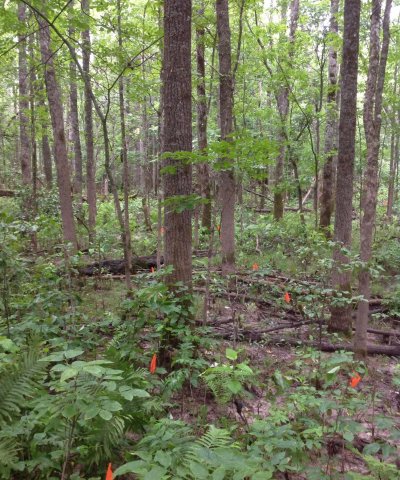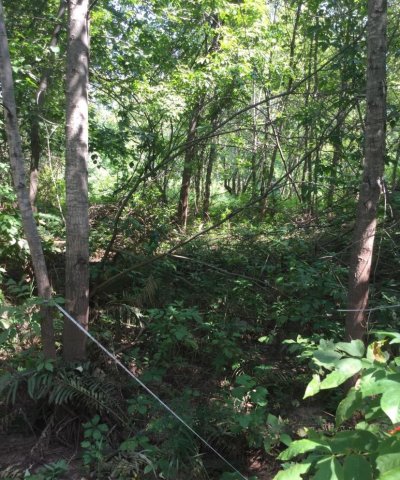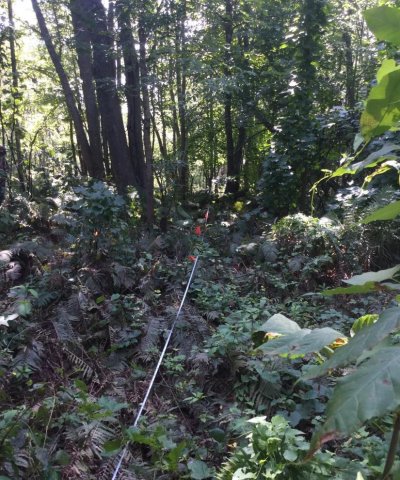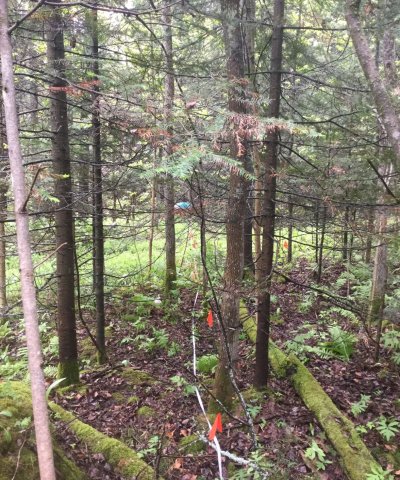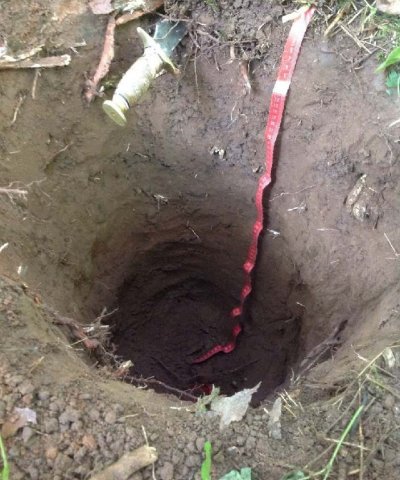
Natural Resources
Conservation Service
Ecological site F092XY004WI
Seasonally Dry Floodplains
Last updated: 4/09/2020
Accessed: 12/08/2025
General information
Provisional. A provisional ecological site description has undergone quality control and quality assurance review. It contains a working state and transition model and enough information to identify the ecological site.
MLRA notes
Major Land Resource Area (MLRA): 092X–Superior Lake Plain
The Wisconsin portion of the Superior Lake Plain (MLRA 92) corresponds very closely to the Superior Coastal Plain Ecological Landscape published by Wisconsin Department of Natural Resources (WDNR 2015). The following brief overview of this MLRA is borrowed from that publication.
The Superior Coastal Plain is bordered on the north by Lake Superior and on the south by the Northwest Sands, Northwest Lowlands, and North Central Forest Ecological Landscapes. The total land area is approximately 1.2 million acres, which mostly consists of privately-owned forestland. The climate is strongly influenced by Lake Superior, resulting in cooler summers, warmer winters, and greater precipitation compared to more inland locations. The most extensive landform in this ecological landscape is a nearly level plain of lacustrine clays that slopes gently northward toward Lake Superior. The coastal plain is cut by deeply incised stream drainages and interrupted by the comparatively rugged Bayfield Peninsula.
During the Late Wisconsin glacial period, this area was covered with the advancing and retreating lobes of Superior and Chippewa. The landscape was rippled with moraines, but they were subdued by deposition of lacustrine materials. As the glaciers receded, glacial lakes riddled the landscape—most notably, Glacial Lake Duluth. The glacier receded eastward, exposing the western Lake Superior Basin. The ice covered the eastern basin, blocking the outlet of the lake, and continued to recede and contribute meltwaters that filled the glacial lake. The deep, red clays were deposited during this period of glacial lakes. The meltwaters from the glacier also contained sands which were deposited along the edge of the glacial lakes as beach deposits. Deep, narrow valleys have since been carved by rivers and streams flowing north into Lake Superior.
Historically, the Superior Coastal Plain was almost entirely forested. Various mixtures of eastern white pine (Pinus strobus), white spruce (Picea glauca), balsam fir (Abies balsamea), white birch (Betula papyrifera), balsam poplar (Populus balsamifera), quaking aspen (Populus tremuloides), and northern white-cedar (Thuja occidentalis) occurred on the fine-textured glacio-lacustrine deposits bordering much of the Lake Superior coast. Sandy soils, sometimes interlayered with clays, occur in some places. Such areas supported forests dominated by eastern white pine and red pine (Pinus resinosa). Eastern white pine was strongly dominant in some areas, according to mid-19th century notes left by surveyors of the federal General Land Office (Finley, R. 1976). Dry-mesic to wet-mesic northern hardwoods or hemlock-hardwood forests were prevalent on the glacial tills of the Bayfield Peninsula. Large peatlands occurred along the Lake Superior shoreline, associated with drowned river mouths.
Classification relationships
Habitat Types of N. Wisconsin (Kotar, 2002): All sites in this ES key out to Acer saccharum / Athyrium felix-femina – Rubus pubescens. [AAtRp]
Biophysical Setting (Landfire, 2014): This ES is mapped as Eastern Boreal Floodplain, Laurentian-Acadian Northern Hardwoods Forest-Hemlock; and Laurentian – Acadian Sub-boreal Mesic Balsam Fir-Spruce Forest. It is most similar to Eastern Boreal Floodplain.
WDNR Natural Communities (WDNR, 2015): This ES is most similar to Mesic Floodplain Terrace.
USFS Subregions: Superior-Ashland Clay Plain Subsection (212Ya); May contain small areas of Ewen Dissected Lake Plain Subsection (212Jo), Winegar Moraines Subsection (212Jc), Gogebic-Penokee Iron Range Subsection (212Jb), and NorthShore Highlands Subsection (212Lb)*
Major Land Resource Area (MLRA): Superior Lake Plain (92)
Ecological site concept
Seasonally Dry Floodplain sites occur throughout the MLRA on active flood plains, natural levees, and bars located on alluvial plains of active streams flowing into Lake Superior. Landform shape can be linear, convex, or concave. These sites are characterized by very deep, somewhat poorly drained and moderately well drained soils that formed in sandy, loamy, and clayey alluvium. These sites are subject to brief periods of flooding throughout the growing season. Water source is primarily stream overflow, but precipitation, runoff from adjacent uplands, and groundwater discharge are common. Soils can range from strongly acid to neutral. Vegetation on this site can range but must be tolerant of occasional ponding.
Finley (1976), in his interpretation of the federal General Land Office public land survey information concluded that in the mid 1800s about 28 percent of the forest cover in the Superior Coastal Plain could be classified as northern hardwoods. Based on our current understanding of site/plant community relationships, the occurrence of this historic northern hardwood community occurred primarily on the AAtRp and the closely associated, sand over clay, ASnMi habitat type. The two habitat types together support a wide range of tree species. Today’s forest stands on both habitat types are most often dominated by red maple, trembling aspen, white birch and balsam fir. However, the presence of sugar maple Acer saccharum most clearly distinguishes this Ecological Site from other wet-mesic forest communities of lower productivity and different succession dynamics. In addition to sugar maple, red oak (Quercus rubra), American basswood, (Tilia Americana) and white ash (Fraxinus Americana) are sporadic associates on this Ecological Site.
Shrub layer typically is only moderately well developed, but can include many species. Most often present are beaked hazelnut (Corysus cornuta), bush honeysuckle (Diervilla lonicera), gooseberries (Rhibes spp.) and dwarf raspberry (Rubus pubescens).
Herb layer is well developed and species rich. Bracken fern (Pteridium aquilinum), big-leaf aster (Eurybia macrophylla), lady fern (Athyrium felix-femina) and wild sarsaparilla (Aralia nudicaulis) typically are most abundant. Other common species include spinulous shield fern (Dryopteris spinulosa), interrupted fern (Osmunda claytoniana), yellow bead-lily (Clintonia borealis), wild lily-of-the-valley (Maianthemum canadense), starflower (Trientalis borealis), and bunchberry (Cornus Canadensis).
This ES differs from Wet Floodplain mostly by position and drainage class. Wet Floodplains are palustrine wetlands with poorly drained soils and a slope of 0 to 1 percent. The Seasonally Dry Floodplains are moderately well to somewhat poorly drained soils and have a slope of 0 to 6 percent. The Wet Floodplains are subject to more flooding and are saturated throughout the year.
Associated sites
| F092XY013WI |
Sandy Uplands These sites are moderately well to excessively drained and formed in deep sandy deposits. Soils are often acidic. These sites are often adjacent to Seasonally Dry Floodplains and are higher in the drainage sequence. |
|---|
Similar sites
| F092XY005WI |
Wet Floodplains These sites are poorly drained soils formed in loamy alluvium. They are palustrine wetlands that are saturated throughout the year. Sites receive water from stream overflow, but remain saturated with poor drainage and high groundwater tables. Sites are slightly acidic. These sites are near Seasonally Dry Floodplains, on the same landscape. These sites have a finer texture, so the soils remain saturated throughout the year. |
|---|
Table 1. Dominant plant species
| Tree |
(1) Acer saccharum |
|---|---|
| Shrub |
(1) Corylus cornuta |
| Herbaceous |
(1) Eurybia macrophylla |
Click on box and path labels to scroll to the respective text.
Ecosystem states
| T1A | - | Stand replacing disturbance that includes fire |
|---|---|---|
| T1B | - | Removal of forest cover and tilling for agricultural crop production |
| R2A | - | Deciduous forest community is slowly invaded by conifers and sugar maple. |
| T2A | - | Removal of forest cover and tilling for agricultural crop production |
| R3A | - | Cessation of agricultural practices leads to natural reforestation, or site is replanted. |
